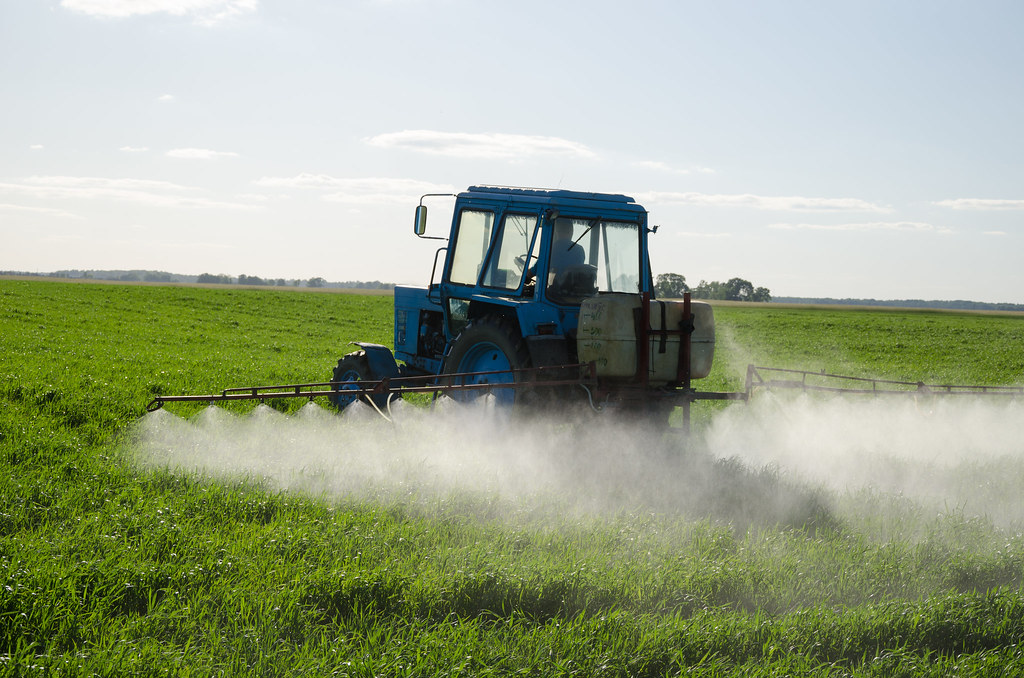
A new peer-reviewed paper has identified systemic failings in Europe’s pesticide risk assessment process. Written by Claire Robinson and a group of experts in law, policy, and toxicology, our paper outlines how these failings could seriously undermine ambitions for sustainable agriculture and a “green recovery” from the COVID-19 pandemic – and proposes a comprehensive agenda for reform.
By Claire Robinson
We were driven to write the paper by the recognition that while the EU has one of the most stringent pesticide regulations in the world, its aims have not been fulfilled.
Regulation 1107/2009 was written to ensure, in its own words, “an independent, objective and transparent assessment of pesticides and achieve a high level of protection for health and environment”.
Yet a growing number of scientific studies show that pesticides that have successfully passed through the EU’s authorization process are harming humans, animals, and the environment. Findings include abnormally high rates of disease in farming families and other exposed people, residues of dangerous pesticides detected in food and the environment, and the catastrophic decline of insects, including pollinators important for food production
What’s going wrong – and how to fix it
Our group got together to try to answer these questions. We built on the work of an interdisciplinary group of scientists, lawyers, and policymakers – including our group of authors – who in 2018 formed the coalition Citizens for Science in Pesticide Regulation. More than 140 NGOs signed up to the Coalition’s manifesto demanding reform in risk assessment in order to ensure that pesticide use causes no harm to humans, animals, and the environment.
In writing our paper, we used the EU approval of the controversial pesticide glyphosate as a main example, but extrapolated to other pesticides when the evidence allowed.
Our findings
We found that for the most part, the law itself is not at fault. Instead, the problem lies with a failure on the part of regulatory bodies to follow or enforce the hard or “soft” laws governing how pesticides are regulated.
The problems
The main problems that we identified in pesticide risk assessment included:
- Industry conducts its own safety testing of pesticides. This is a clear recipe for bias. It is the only shortcoming in the pesticide risk assessment process that we identified that demands a change in the law. Safety testing should be carried out by independent laboratories, commissioned by an independent public body, though industry should continue to pay the full cost.
- Industry is allowed to cherry-pick studies with favourable results to include in the dossier presented to regulators in support of regulatory approval, while omitting studies showing risk or harm.
- Studies with unfavourable results are excluded for invalid reasons.
- Plagiarism: Regulators uncritically repeat the pesticide industry’s own interpretations of studies and data, while presenting them as independent validation.
- Misuse of statistical analytical tools. In one example, regulators engaged in this form of scientific misconduct to wrongly conclude that glyphosate did not have a carcinogenic effect.
- Ongoing failure to address mixture effects. Mixtures can be more toxic than isolated pesticide “active” ingredients, but only the latter are tested and assessed for regulatory purposes.
- Failure to root out conflicts of interest within regulatory agencies, undermining the independence and objectivity of pesticide assessments.
The solutions
We didn’t want to stop at spotting problems – so we also spent time developing solutions, which we detail in our paper. They are practical and achievable: most can be immediately implemented without changes in the law.
The solutions boil down to regulators needing to tighten up the way they carry out the risk assessment and apply current scientific knowledge and analytical tools. Regulators must follow and enforce the hard and “soft” laws that govern pesticide regulation in the EU – the “hard” law being the Regulation itself and the “soft” law being the guidance documents written by national and international agencies on how pesticide risk assessments should be carried out.
While not legally binding, these “soft” law documents detail scientific and administrative best practices that should be followed to produce an objective and scientifically rigorous risk assessment.
Our proposed solutions include:
- Wider use of “systematic review” methods to ensure objectivity and transparency in evaluating scientific research results
- Correct use of statistical analytical tools in line with the appropriate guidance
- Evaluating the toxicity of pesticide formulations as sold and used rather than just the isolated “active” ingredients – and assessing the toxicity of some of the chemical mixtures that are widely present in the environment
- Avoidance of the common practice of plagiarising industry’s own interpretations of safety data – instead, regulators must carry out objective and independent evaluations of data
- Strengthening independence policies to exclude conflicts of interest in regulatory agencies.
Prof Christopher Portier, former director of the US National Center for Environmental Health and a co-author of our paper, commented: “Scientific rigour and complete transparency are critical to both the evaluation of data used in regulatory decision making and to the trust the public will have in those evaluations.”
Political context: Calls for “green recovery”
If the failings we identify in pesticide risk assessment are allowed to persist, they could sabotage ambitions for a sustainable agriculture and the “green recovery” from the COVID-19 pandemic that has been demanded by a broad cross-section of society – including 13 European climate and environment ministers; 180 policy makers, business leaders, researchers and non-governmental organisations (NGOs); and Frans Timmermans, the Commissioner in charge of the European Green Deal a new growth strategy that aims to make the EU’s economy sustainable.
The Green Deal includes the Farm to Fork (F2F) Strategy, which aims to “secure a fair, healthy and environmentally friendly food system”, as well as to “significantly reduce the use and risk of chemical pesticides”.
Dr Angeliki Lyssimachou, co-author of the new paper and science policy officer at Pesticide Action Network Europe, said, “Risk reduction cannot happen unless the risk assessment is done properly.”
As well as the F2F, the Commission will publish its long overdue REFIT evaluation of the EU’s pesticide Regulation, assessing whether it meets “the needs of citizens, businesses and public institutions in an efficient manner”. Concerns have been raised that REFIT appears to focus on making regulations “better” for industry and that the pesticide Regulation will be deliberately weakened.
The publication of F2F as well as the REFIT of the pesticide Regulation has been delayed due to COVID-19, with 20th May now the likely release day. The farmers’ association COPA-COGECA has lobbied for publication to be delayed until autumn – or for an impact assessment to be carried out first.
In our view, however, the lesson of the COVID-19 crisis confirms the findings of our research: that we cannot afford more delays in implementing a healthy, sustainable, and resilient food system.
The new paper (open access)
Claire Robinson et al. (2020). Achieving a High Level of Protection from Pesticides in Europe: Problems with the Current Risk Assessment Procedure and Solutions. European Journal of Risk Regulation. DOI: https://doi.org/10.1017/err.2020.18
Claire Robinson is editor at GMWatch.org, which focuses on alerting the public to issues related to genetically modified crops and foods and associated pesticides.
350,000 Tonnes of Pesticides Sold in EU Each Year – Still No Clear Picture of the Risks
Pesticides under Pressure | EU Parliament and Progressive Places Putting Biodiversity First
Pesticides, Tear Gas and History | From WW1 to Today’s Streets
LEAK – EU Biodiversity Strategy Sets Commitments for Fertilizers, Pesticides, Organics
40 Organisations Demand April Publication for Farm to Fork, Biodiversity Strategies




